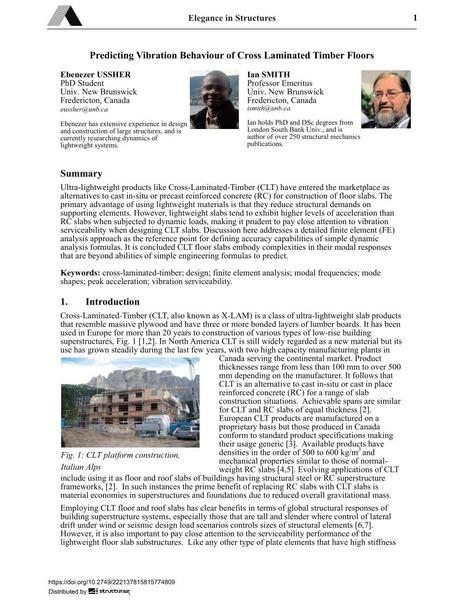Predicting Vibration Behaviour of Cross Laminated Timber Floors

|
|
|||||||||||
Bibliographic Details
| Author(s): |
Ebenezer Ussher
Ian Smith |
||||
|---|---|---|---|---|---|
| Medium: | conference paper | ||||
| Language(s): | English | ||||
| Conference: | IABSE Conference: Elegance in structures, Nara, Japan, 13-15 May 2015 | ||||
| Published in: | IABSE Conference Nara 2015 | ||||
|
|||||
| Page(s): | 252-253 | ||||
| Total no. of pages: | 8 | ||||
| Year: | 2015 | ||||
| DOI: | 10.2749/222137815815774809 | ||||
| Abstract: |
Ultra-lightweight products like Cross-Laminated-Timber (CLT) have entered the marketplace as alternatives to cast in-situ or precast reinforced concrete (RC) for construction of floor slabs. The primary advantage of using lightweight materials is that they reduce structural demands on supporting elements. However, lightweight slabs tend to exhibit higher levels of acceleration than RC slabs when subjected to dynamic loads, making it prudent to pay close attention to vibration serviceability when designing CLT slabs. Discussion here addresses a detailed finite element (FE) analysis approach as the reference point for defining accuracy capabilities of simple dynamic analysis formulas. It is concluded CLT floor slabs embody complexities in their modal responses that are beyond abilities of simple engineering formulas to predict. |
||||
| Keywords: |
design finite element analysis FEA vibration serviceability mode shapes cross-laminated-timber modal frequencies peak acceleration
|
||||
